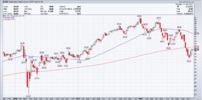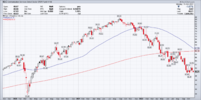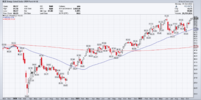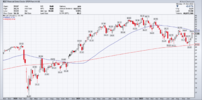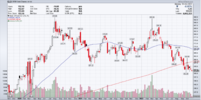- Joined
- 28 December 2013
- Posts
- 6,401
- Reactions
- 24,350
On the flip side
"Position Size" is important & the methodology you use to determine it is also important. Trading small amounts over a short period using a "percentage-based" position sizing beats a fixed dollar position size hands down. But when you start to trade larger amounts over a longer period, it becomes very hard to move those amounts into the markets without a large amount of increased slippage. All I would like to say is the system I use works for me.
Most fail to realise pyramiding works both ways
Pyramiding position sizing works for me as all my available funds are constantly in the markets. Most fail to realise pyramiding works both ways. When trading is not going well, position sizing decreased because of the compounded losses, even a string of losses is reflected. But, when the times are good why shouldn't I take advantage of these conditions & increase my bet sizes? It's the "make hay while the sun shines" theory.
Skate.
"Position Size" is important & the methodology you use to determine it is also important. Trading small amounts over a short period using a "percentage-based" position sizing beats a fixed dollar position size hands down. But when you start to trade larger amounts over a longer period, it becomes very hard to move those amounts into the markets without a large amount of increased slippage. All I would like to say is the system I use works for me.
Most fail to realise pyramiding works both ways
Pyramiding position sizing works for me as all my available funds are constantly in the markets. Most fail to realise pyramiding works both ways. When trading is not going well, position sizing decreased because of the compounded losses, even a string of losses is reflected. But, when the times are good why shouldn't I take advantage of these conditions & increase my bet sizes? It's the "make hay while the sun shines" theory.
Skate.


